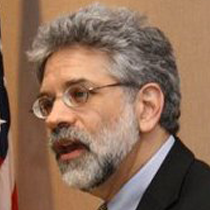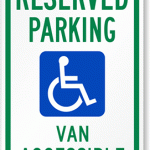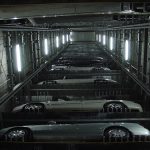How parking garages and lots can LEEP ahead and up their revenue
Parking garages and lots in the U.S. spend more than $6 billion on lighting alone. If their owners cut those costs, how much could they reap in revenue? A lot — or so the Lighting Energy Efficiency in Parking (LEEP) campaign promises. The program offers advice about energy efficiency to owners of parking facilities, as well as presides over an awards program that recognizes companies excelling in such initiatives.
Backed by a consortium of influential organizations—the Green Parking Council, International Facility Management Association, Better Buildings Alliance, the International Parking Institute, and BOMA International—the effort has generated international buzz since its launch just last November. “We’re hoping to be able to hold off on international growth,” explained Paul Wessel, executive director of the Green Parking Council, “but demand is such that we may not be able to do that.”
SmartSign recently spoke with Wessel and Trevyr Meade — also with the Council — to learn what it is about the program that’s exciting policymakers from Brazil and Australia to South Africa and points beyond.
Tell us about the Green Garage Certification program.
Paul Wessel: Some of us had gotten facilities LEED-certified when LEED was actually certifying parking garages. [Ed.: Parking structures became ineligible for LEED certification in 2011, for reasons that are still contested.] Inspired, people said, “Let’s do a green garage certification. Let’s throw open the doors and make this an open source project—get ideas from planners and from tech folks and some operators about what we can do to help garages contribute to the planet.”
Is the program solely for existing garages, or is it also for people thinking about building new ones?
PW: It was designed to encompass both existing facilities and new facilities. Clearly, new construction is a greater opportunity to do more things, but we thought it was important to have a program that allowed, encouraged, and recognized retrofits, which is why there’s an emphasis on programs you can offer within the facility, as well as management of the facility, not just structural and design elements.
What kinds of businesses have taken advantage of the program?
PW: We just launched on June 1. No garages have yet been certified, but we’ve had interest across the spectrum. We’ve really focused on parking facilities and structured parking because of the near universal belief that structured facilities—parking garages—are a more sustainable use of land than parking lots are. But we’ve realized over the last few years that parking lots are going to be part of the parking system and things like how we manage the stormwater runoff, how we light them, are really important. Those are opportunities not to be missed.
What burdens do the program place upon owners, and what benefits can they enjoy?
Trevyr Meade: The burden is implementing the different technologies, capital costs that were required, as well as the fees of going through the process. The benefits? The program as a whole provides a road map to how the garage can be more sustainable, as well as to recognize facilities that have done so. It incorporates 47 different initiatives that a garage can implement. Some focus on things that can increase the longevity of the structure; other items look at energy efficiency, such as lighting, ventilation systems.
Holistically, the program looks to recognize commitment to sustainability. A facility can recognize different economic benefits through deploying the practices and technologies included.
What surprises you most about the program?
PW: We’ve been pleasantly surprised with how much interest there is in the program. This was really an idea whose time had come. Two things are going on, both of them having to do with technology. One is garages themselves are becoming more technologically savvy. It’s not an industry that has really taken advantage of tech solutions until very recently, so there’s a lot of interest in newer, more efficient ways of parking cars.
Secondly, the whole connected car — this idea that either through your car’s navigation system or through your phone you may reserve parking spaces, reserving a carshare — all of a sudden the connectivity of the way we get around or the options for how we get around are much easier to accomplish, so I think everyone’s trying to figure out how the parking garage is going to function in the 21st century.
Now it’s going to more than just a place to house cars and, as we approach a time in the middle of the century when 70 percent of the world’s population lives in megacities, how are we going to move people around in the variety of ways in which we can? How does the parking garage enable that? I think people see that there’s an opportunity to recast what a parking garage has to offer.
Related Posts
Category: Green Parking



















